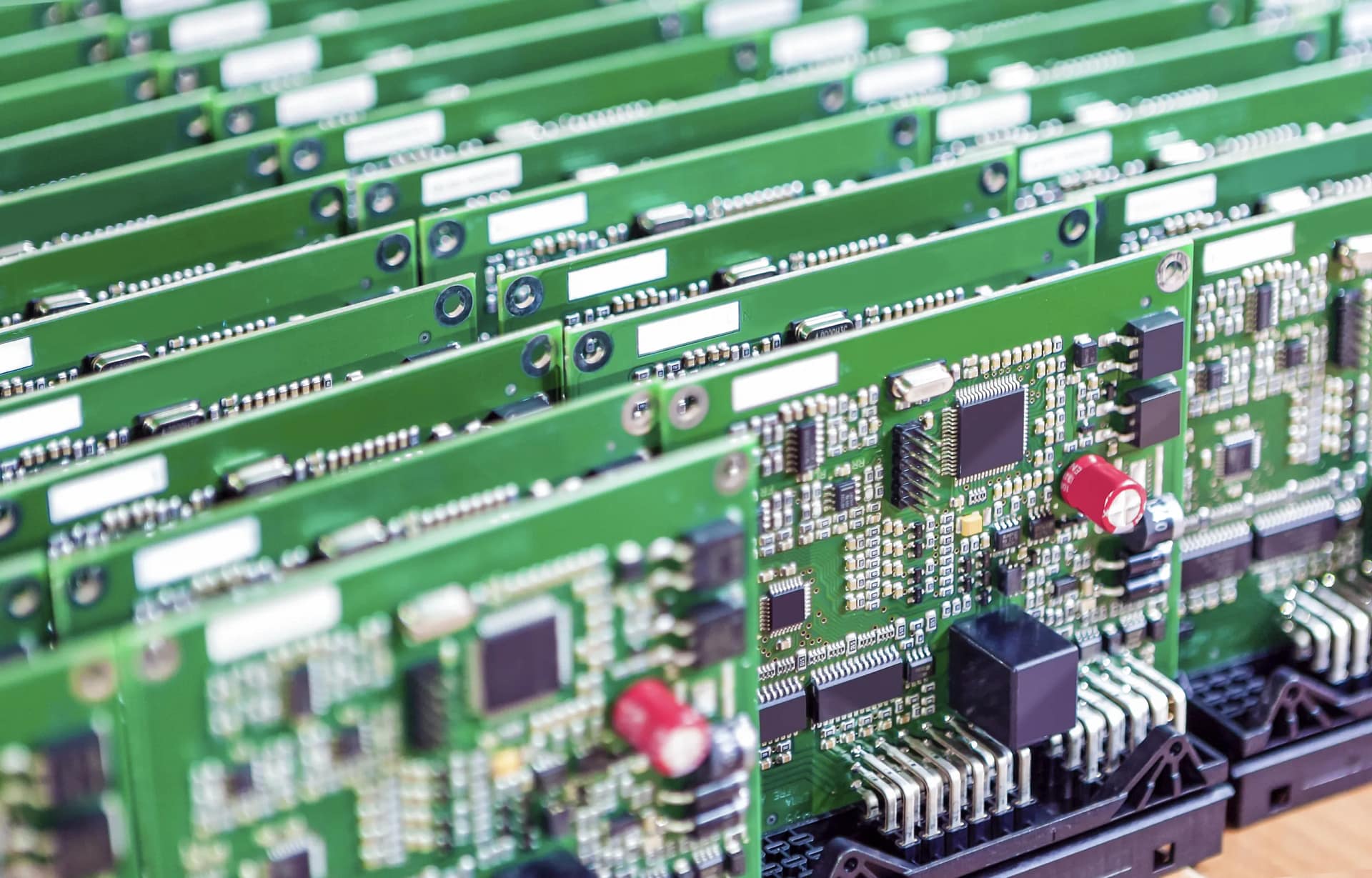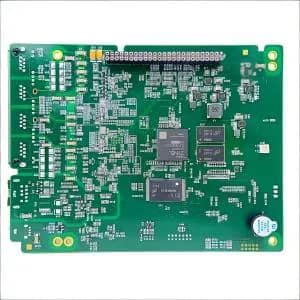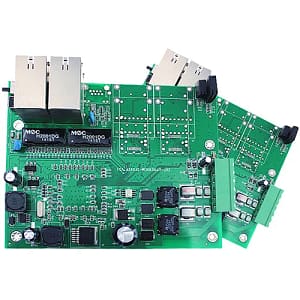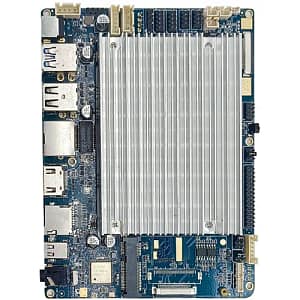Overview of PCBA Design for Car Control Systems
UGPCB offers state-of-the-art PCBA design services tailored for automotive control systems, ensuring reliability and efficiency in demanding environments. This solution integrates advanced تصنيع ثنائي الفينيل متعدد الكلور with assembly (ثنائي الفينيل متعدد الكلور) to support critical functions in modern vehicles, such as engine management, safety controls, and infotainment systems. By leveraging high-layer counts and robust materials, UGPCB’s PCBA designs meet stringent automotive standards, providing a foundation for innovative car electronics.
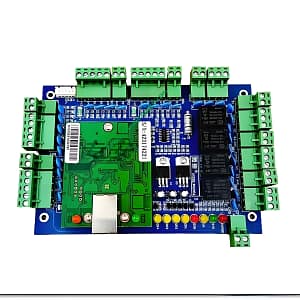
Definition of PCBA in Automotive Applications
ثنائي الفينيل متعدد الكلور, or مجموعة لوحة الدوائر المطبوعة, refers to the process of mounting المكونات الإلكترونية onto a ثنائي الفينيل متعدد الكلور to create a functional circuit system. In car control systems, PCBA acts as the core electronic backbone, facilitating signal processing, توزيع الطاقة, and data communication between vehicle components. This definition underscores the importance of precision in تصميم ثنائي الفينيل متعدد الكلور and assembly to ensure seamless operation in automotive environments.
Key Design Considerations for Automotive PCBA
Designing a PCBA for car control systems requires attention to several critical factors. أولاً, the PCB layer count—up to 12 layers—enables complex routing for high-density circuits, reducing interference and improving signal integrity. Substrate materials like high-TG FR-4 (with TG values such as tg170) provide thermal stability, preventing deformation under high temperatures common in vehicles. التشطيبات السطحية, including lead-free HASL or immersion gold with a thickness of 2U-5U, enhance solderability and corrosion resistance. Copper thickness options (0.5oz to 6oz) allow for optimized current handling, while solder mask colors (على سبيل المثال, أخضر, أسود) can be customized for identification and durability. بالإضافة إلى ذلك, design must account for electromagnetic compatibility (إي إم سي), vibration resistance, and compliance with automotive standards like ISO 26262.
How PCBA Works in Car Control Systems
The PCBA functions as the central nervous system of a car’s electronic controls. It processes inputs from sensors (على سبيل المثال, for engine temperature or brake pressure) and outputs commands to actuators (على سبيل المثال, fuel injectors or display units). على سبيل المثال, in an engine control unit (ECU), the PCBA manages data via embedded microcontrollers and power components, ensuring real-time response. ال ثنائي الفينيل متعدد الكلور متعدد الطبقات بناء, with precise copper traces and vias, facilitates efficient electrical pathways, while the high-TG material maintains performance under hood temperatures, ensuring reliable operation throughout the vehicle’s lifecycle.
Applications of PCBA in Automotive Electronics
PCBA designs for car control systems are used across various vehicle subsystems. Key applications include engine and transmission control modules, advanced driver-assistance systems (ADAS), battery management in electric vehicles, infotainment displays, and climate control units. These PCBA solutions enable features like adaptive cruise control, collision avoidance, and energy efficiency, highlighting their role in enhancing safety, comfort, and sustainability in modern automobiles.
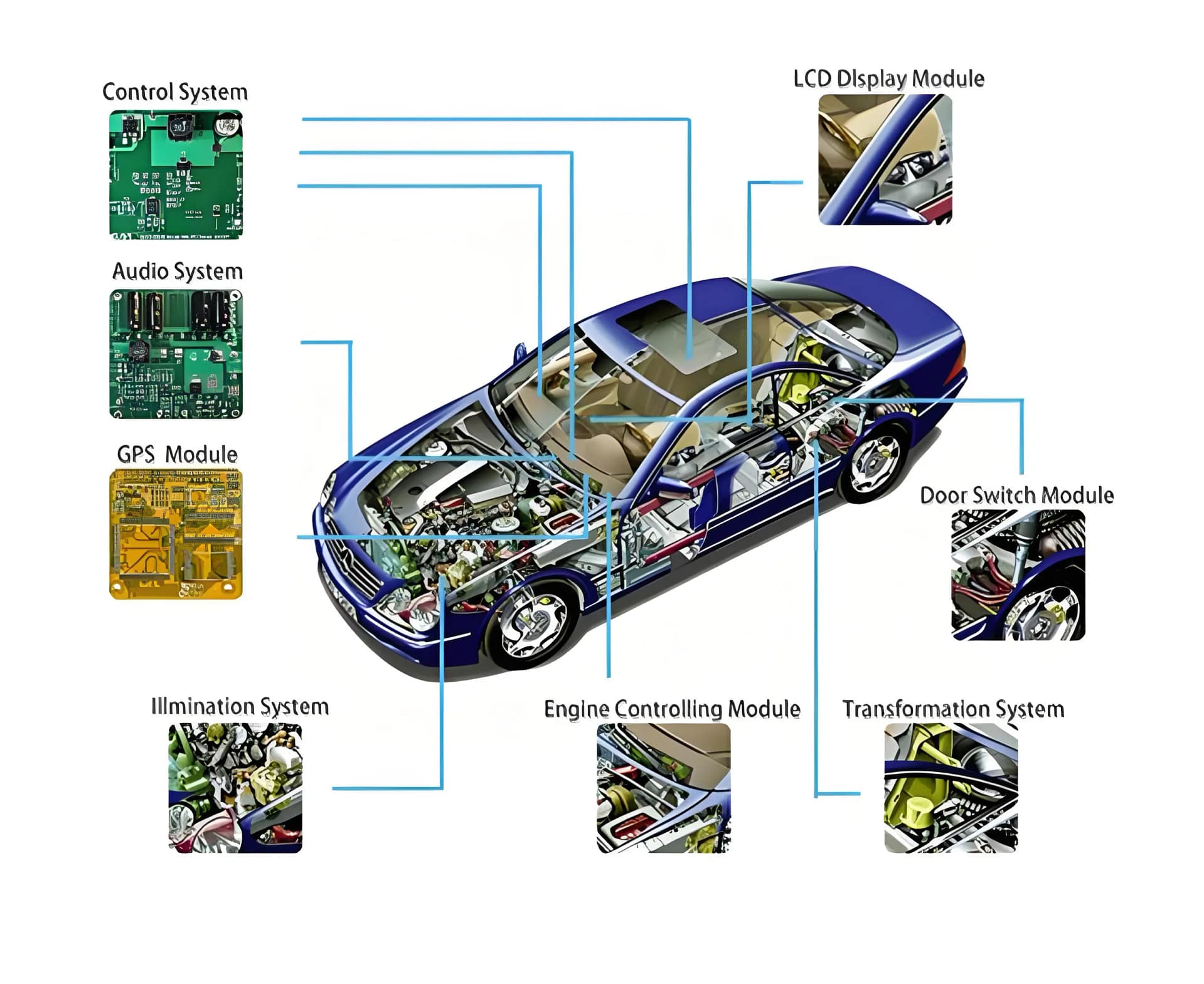
Classification of Automotive PCBA Products
Automotive PCBA can be categorized based on functionality and complexity. Common classifications include power management PCBA (handling high currents with thicker copper), signal processing PCBA (using higher layer counts for data-intensive tasks), and safety-critical PCBA (featuring redundant designs and rigorous testing). UGPCB’s offerings span these categories, with options for custom layer stacks, مواد, and finishes to match specific automotive requirements.
Materials Used in PCBA Manufacturing
The materials selected for PCBA directly impact performance and longevity. UGPCB employs high-TG FR-4 substrates, which offer excellent thermal resistance and mechanical strength for under-hood conditions. Surface finishes like immersion gold provide a flat, reliable surface for component soldering, while lead-free HASL ensures environmental compliance. Copper foils (0.5oz to 6oz) are chosen based on current-carrying needs, and solder masks in colors like green or black protect against moisture and scratches. These materials collectively support durability in harsh automotive environments.
Performance Characteristics of Automotive PCBA
UGPCB’s PCBA designs excel in performance metrics such as thermal stability (handling temperatures up to 170°C with high-TG materials), electrical reliability (minimizing signal loss with controlled impedance), and mechanical robustness (resisting vibration and shock). The inclusion of PCB and PCBA testing—such as automated optical inspection (الهيئة العربية للتصنيع) and in-circuit testing (تكنولوجيا المعلومات والاتصالات)—ensures high yield and compliance with quality standards, reducing failure rates in field operations.
Structural Composition of PCBA for Car Controls
The structure of a PCBA for automotive use typically involves a multilayer PCB stack-up, with inner layers for power and ground planes, and outer layers for component mounting. Vias and through-holes interconnect layers, while the solder mask and silkscreen aid in assembly and identification. The overall design prioritizes compactness and heat dissipation, using materials like high-TG FR-4 to maintain integrity under thermal cycling, which is crucial for long-term reliability in cars.
Features and Advantages of UGPCB’s PCBA Solutions
UGPCB’s PCBA products stand out due to their customizable layer counts (ما يصل الى 12 طبقات), versatile material options (including high-TG substrates), and eco-friendly finishes (على سبيل المثال, lead-free HASL). Key features include enhanced thermal performance, superior signal integrity, and compliance with automotive safety standards. Advantages include reduced time-to-market through efficient ثنائي الفينيل متعدد الكلور اختبار, improved durability in extreme conditions, and cost-effectiveness via optimized design for mass production.
Production Process for Automotive PCBA
The production workflow begins with PCB design and layout, followed by layer lamination using high-TG FR-4 substrates. Copper patterning and plating are done to achieve desired thickness, then surface finishing (على سبيل المثال, immersion gold) is applied. عنصر assembly follows, involving solder paste application, pick-and-place, وإنحسر لحام. أخيراً, rigorous testing—including functional and environmental tests—ensures each PCBA meets automotive specifications before deployment.
Usage Scenarios in Modern Vehicles
UGPCB’s PCBA designs are deployed in various car control scenarios, such as electric vehicle powertrains, where they manage battery and motor controls; ADAS, supporting sensors and cameras for autonomous driving; and in-cabin systems, like touchscreen interfaces. These scenarios demand high reliability, and UGPCB’s solutions deliver by combining robust materials with advanced manufacturing techniques, ensuring seamless integration into next-generation automotive technologies.
 شعار UGPCB
شعار UGPCB
